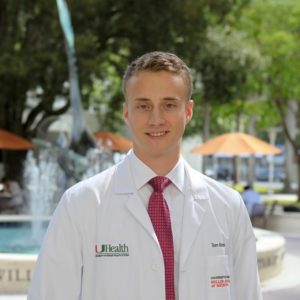
It is safe to reimplant a new cardiac device after the removal of an infected one, and repeat infection rates are low, a large multicentre prospective study has shown. The findings also suggest that timing of the reimplantation does not affect outcomes.
The MEDIC (Multicenter electrophysiologic device infection cohort) study was recently published by Thomas A Boyle (University of Miami, Miami, USA) and others in Circulation Arrhythmia and Electrophysiology.
Infection is a serious complication of cardiovascular implantable electronic device (CIED) implantation and constitutes a major burden for patients and providers. It is associated with severe morbidity and mortality, high costs of treatment, and long hospital stays. Optimal treatment is complete device removal, and is a class I recommendation in all cases of pocket infection and endocarditis, regardless of whether device involvement is confirmed.
But there is less evidence about management strategies for device reimplantation after infection. Approaches vary widely and have not previously been analysed in a large, multicentre study. CIEDs can be reimplanted anywhere from minutes to months after extraction, using a wide variety of temporary pacing methods.
MEDIC analysed patients with CIED infections at 10 institutions in the USA, Spain, and Germany between 2009 and 2012. It aimed to determine the risk of repeat infections after CIED reimplantation and to evaluate reimplantation strategies. The 434 patients in the registry were followed for a period of six months.
On admission and enrolment, participants had multiple blood and pocket cultures and a transthoracic echocardiogram to assess for vegetations. Many also had a transoesophageal echocardiogram. In the vast majority of cases, percutaneous or surgical device removal was attempted, with individual physicians deciding whether or not to extract the device and reimplant. As a result, the timing of the procedures varied considerably. Any extracted hardware was analysed for bacteriology, and patients received antibiotic therapy in accordance with published guidelines.
Every patient who relapsed within six months was individually examined for clinical information that could help to explain the negative outcome. During the initial course of therapy, complete device removal was done in 381 (87.8%) patients, and 220 (57.7%) of them were ultimately reimplanted with new devices. The median time between removal and reimplantation was 10 days, with an interquartile range of six to 19 days. Of the 434 patients, 11 had another infection within six months, but only four of them had been managed with CIED removal and reimplantation during the initial infection. Thus, the repeat infection rate was low (1.8%) in those who were reimplanted.
Outcomes depended upon the device management strategy. Patients whose device was not removed had the worst outcomes. At the end of six months, 26.4% of these were deceased, 11.3% had repeat infections, and 28.3% were on chronic antibiotic therapy. Only 34% of patients remained infection-free without chronic suppression. Patients who were treated with device removal had superior outcomes. Regardless of the reimplantation window, between 70% and 86% of patients remained alive and infection free without the need for chronic antibiotics.
The researchers acknowledged the limitations of the study. These included the six-month follow-up period—further CIED infections may have occurred in the cohort after the recorded period. In addition, there was no information about whether repeat infections were caused by the same organism (a relapse) or different organisms (a reinfection). And they pointed to an inherent referral bias in the study population, because all the participating institutions were tertiary referral centres.
Although it is difficult to generalise from the small number of cases with poor outcomes, the authors say the findings suggest it is better to seek creative solutions in patients with very many comorbidities. In complicated patients, they advised considering alternatives such as a subcutaneous implantable cardioverter defibrillator or leadless pacemaker for reimplantation.
And they recommended that all patients be thoroughly evaluated to reassess their need for a CIED before reimplantation. “Reasons for not reimplanting devices include improved ejection fraction, recovery of sinus function, and improvement of symptomatic bradycardia. We do not have patient-level data regarding these evaluations, but the reimplant rate in this study is similar to the rate reported in previous studies.
“Our study findings confirm that a broad range of reimplant strategies are used in clinical practice in patients with CIED infections. Those findings suggest that it is safe to reimplant cardiac devices after extraction of previously infected hardware and that the risk of a second infection is low, regardless of the timing of reimplantation.”









